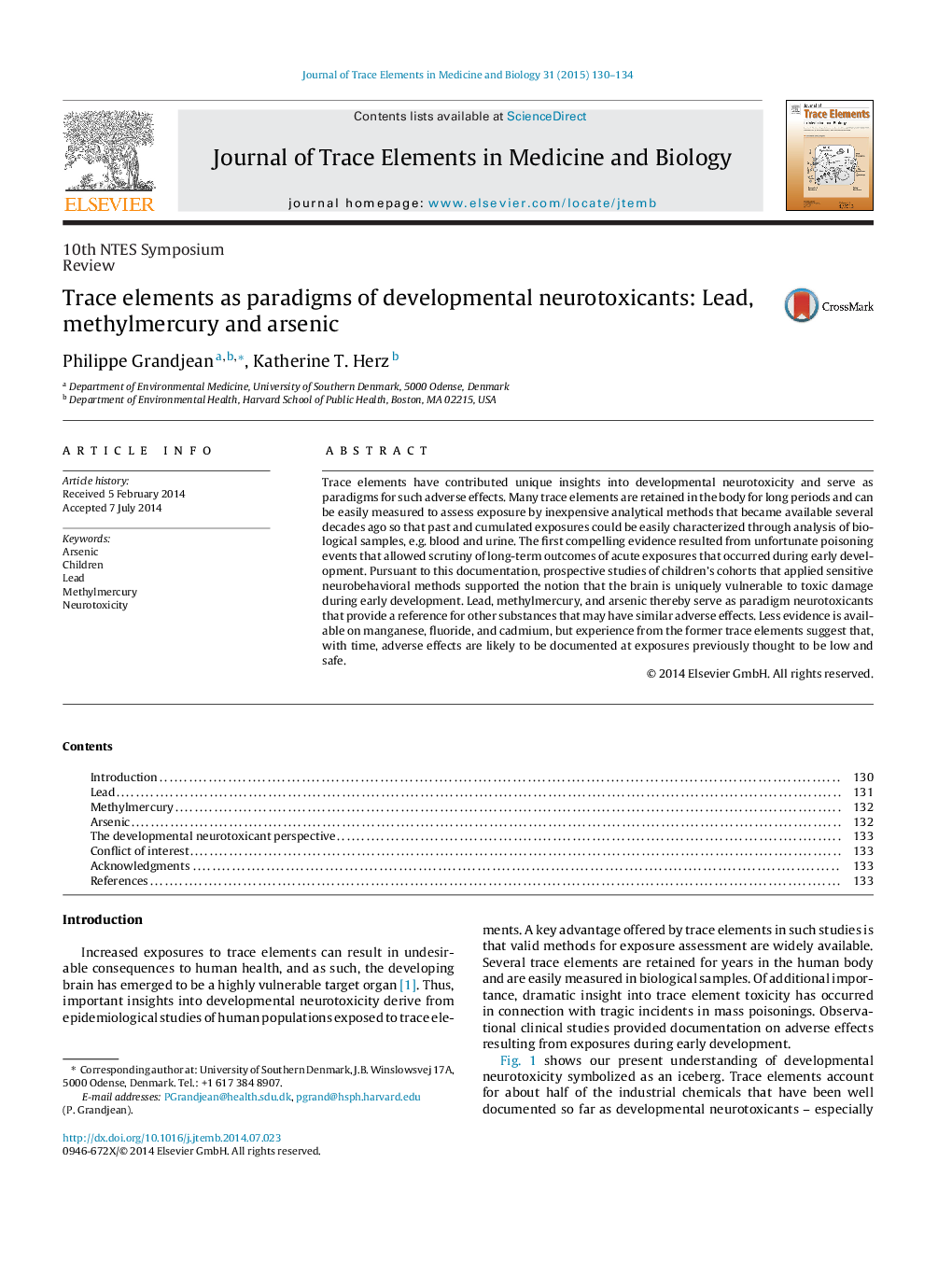| کد مقاله | کد نشریه | سال انتشار | مقاله انگلیسی | نسخه تمام متن |
|---|---|---|---|---|
| 1226382 | 1494825 | 2015 | 5 صفحه PDF | دانلود رایگان |
Trace elements have contributed unique insights into developmental neurotoxicity and serve as paradigms for such adverse effects. Many trace elements are retained in the body for long periods and can be easily measured to assess exposure by inexpensive analytical methods that became available several decades ago so that past and cumulated exposures could be easily characterized through analysis of biological samples, e.g. blood and urine. The first compelling evidence resulted from unfortunate poisoning events that allowed scrutiny of long-term outcomes of acute exposures that occurred during early development. Pursuant to this documentation, prospective studies of children's cohorts that applied sensitive neurobehavioral methods supported the notion that the brain is uniquely vulnerable to toxic damage during early development. Lead, methylmercury, and arsenic thereby serve as paradigm neurotoxicants that provide a reference for other substances that may have similar adverse effects. Less evidence is available on manganese, fluoride, and cadmium, but experience from the former trace elements suggest that, with time, adverse effects are likely to be documented at exposures previously thought to be low and safe.
Journal: Journal of Trace Elements in Medicine and Biology - Volume 31, July 2015, Pages 130–134
